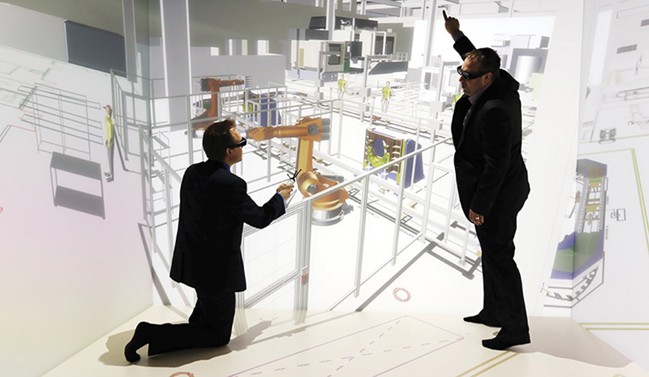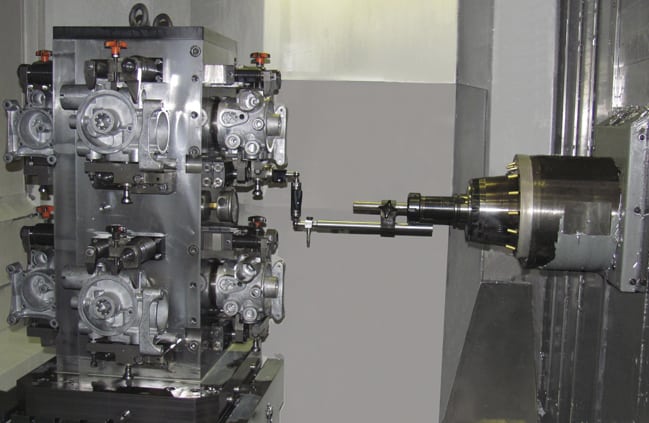Manufacturers have always had to sift through large quantities of data from their production lines in order to understand how their businesses are performing.
But with the increasing use of sensors and instrumentation to monitor, measure and automate the production process, the sheer quantity of information that manufacturers are now faced with has risen dramatically in recent years.

That is set to increase exponentially with the adoption of Industry 4.0, a German government initiative to promote the greater use of sensors and automation within the manufacturing industry, with the aim of developing so-called smart factories.
But it is not enough to simply gather more data, companies need to be able to analyse it, in order to find previously hidden connections that can be used to improve their production processes and, ultimately, the performance of their business.
The term ‘big data’ is often used to describe both the sheer volume of information many companies are now generating, and the analytical tools used to manage and interpret it.
Many of the technologies being introduced to the production line as part of the Industry 4.0 initiative are designed specifically to extract more data, according to Dr Lina Huertas, technology manager for manufacturing informatics at the Manufacturing Technology Centre (MTC) in Coventry.
As the power of decision-support tools become more sophisticated, companies will want to get even more data out of their shop floor, so they will start bringing in more sensors and measurement technologies to provide that data, she said.
“Machines have evolved to be equipped with more sensors and to generate large volumes of data, but as Industry 4.0 evolves, companies are needing to extract even more information in order to inform their decision-making,” Huertas said.
But how do companies determine what information is most important from within this flood of incoming data?
”As Industry 4.0 evolves, companies are needing to extract even more information in order to inform their decision-making
Lina Huertas, MTC
Research by the MTC suggests there are three essential areas that companies should be prioritising, if they are to get the most out of the rise of Industry 4.0. These are data on product quality, including faults or components not meeting their required specifications; information on the health of production equipment, such as maintenance and repair data; and any data that allows them to be more flexible, by allowing them to more easily meet customer demands for increased customisation of their products.
In addition to these, information on the power consumption of each machine, and therefore the energy efficiency of the production line as a whole, is also an important area that companies may wish to analyse, she said.
The main idea behind the trend towards big data is to collect any and all information, no matter what form it takes, according to Dr Daniel Peavoy, technology manager for process modelling at MTC. “The idea with big data is to keep everything, no matter how it is structured, and then integrate these different types of data into one analytics platform,” said Peavoy.
Big data is about integrating any and all data, whether that be information from sensors, data on product quality, or resource planning data, into a single framework, he said. That could mean collecting not just data from production equipment, but also information from the internet, weather reports, images, video or audio files, emails from customers, or even a twitter feed, Peavoy added.
“So whereas previously you might have held data on business performance within a database, no one would have considered integrating that with their sensor data, supply chain data, or customer feedback data,” he said.
Once all of this data is collected, companies need to determine what specific information they want to analyse further, added Peavoy. “So you may have a specific issue with quality, and you want to understand if there is any relation to equipment performance, or equipment life, or any manufacturing parameters such as throughput, or the number of rejects,” he said.

Combining data from various sources into the same framework allows you to spot connections between different areas of the production process that may have been difficult, if not impossible, to identify previously.
“So you might have some properties measured from your machine tools, such as the temperature within the coolant, and you can relate that to quality data that may not be gathered until a few hours, days or even weeks later,” added Peavoy. “As soon as you can carry out data mining on these integrated data sets then you can start to discover previously unknown relationships,” he said.
”The idea with big data is to keep everything, no matter how it is structured, and then integrate these different types of data into one analytics platform
Daniel Peavoy, MTC
This is not a task that is easily performed manually, however, as it involves trawling through and comparing huge amounts of information, all held in different file formats.
So companies may need to seek help from tools such as business intelligence software, according to Andy Graham, senior systems architect for Wonderware UK and Ireland. This type of software has previously been used in areas such as enterprise resource management, but it is now being increasingly deployed on the shop floor to help manufacturers keep track of their production lines as well, he said. “These tools allow you to analyse multiple data sources and reveal more information about the process,” added Graham.
So rather than just reviewing data on a particular machine to monitor the amount of time in which it is productive on a given day, for example, companies can use business intelligence tools to compare this with shift data, or information from the internet on the weather at that time, say, to try to understand the reasons behind this performance.
“That is key, to be able to analyse the data in the best way possible and I think the only way to do that to real effect is through an enterprise software product, as it isn’t something that people can do manually, or if they could it would take them a very long time to do,” said Graham.
Visualisation tools can also be used to help companies to better understand what the information is telling them about how they could improve their production process and the bottom line.
But ultimately though, software tools will only be useful once a company has given careful thought to what they hope to get out of all of the data they are collecting and analysing. In that way companies can begin to understand what all of the data is telling them about what is happening on their production line.

April 1886: the Brunkebergs tunnel
First ever example of a ground source heat pump?